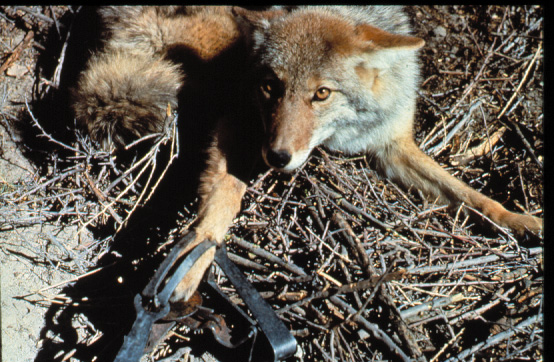Just when you think you understand all that there is to know about Coyotes they will fool you (me!). A recent news article from suburban Detroit describes a home owner waking to the sound of braking glass. Another person living there also responded to the braking glass and together they found a Coyote sprawled on the floor beneath a broken dinning room window. They immediately called animal control officers who removed the Coyote from the couple’s home. As the officers were walking away from the house the home owners returned to clean up the broken glass and over turned furniture. Surprised, the home owners found yet another Coyote in a comatose state underneath the over turned furniture. They yelled for the animal control officers to come back and retrieve the now staggering Coyote. Now this being that time of the year when Coyotes are romantically engaged it would not be farfetched to imagine that one of the Coyotes was either running in fear or was being pursued. We don’t know which was which since the sex of either Coyote was not divulged in the news article. Nonetheless, the lead Coyote must not have seen the window but imagined it as a path of freedom and the following Coyote was hot on its heels. Food or a potential mate is the driving force in the animal kingdom but through a glass window? Hmm . . . .
The above article’s readers were discussing the elimination of these uninvited guests and trouble makers. A few folks apparently put their mouths in motion (pen to paper / hit the send button) before engaging their brains. Conversely, the folks who read this blog know that the State of New Mexico as well as Arizona, Colorado, Oklahoma and Texas (dang near every state in the union for that matter) prohibit discharging firearms inside city limits. It seems our Canadian neighbors in Kirkland, Montréal have similar laws on discharging weapons in inside municipal boundaries.

Sadly, the use of leg traps (steel jawed) is still permitted in some areas but again, pretty well discouraged by many state wild life agencies specifically near human habitations. Think about Spot or Fluffy or worse yet, a young child being snared by a leg trap.

Most state wild life agencies do permit the use of “padded” leg traps but even those have alarms that electronically alert that the trap has been tripped. Having said this many times before – Once you have seen a Coyote in your neighborhood it is probably too late to get rid of them. The dens and hunting areas are well established by the time you see these fur covered menaces!
Some say Coyotes are the reason for missing pets and for that reason the Coyote should be exterminated. There are other reasons for deterring Coyotes such as rabies and mange. Both of these illnesses can be transmitted to Spot or Fluffy by unhealthy Coyotes. This past summer of 2016 saw several people in California bitten by a supposed rabid Coyote while a local Albuquerque Coyote recently recorded by a local TV station, was found to be suffering from a sever case of mange. Sick animals are usually easy to spot and for that reason may serve as a warning sign there are problems coming soon to a yard near you. Coyotes are increasingly less fearful of humans though when confronted they will skulk off and disappear. The Coyotes are not gone they have moved beyond where humans habitually look for them and there they will hide until we leave that area.
This author use to hunt (in the early days with a gun though now with cameras) and the one thing that never escapes my thoughts is that the Coyote will let humans pass very closely before they react. The nearby Bosque (wooded area bordering the Rio Grande River) provides a great walk through nature. The river draws migrating water fowl making their journeys south in the winter and returning north in the spring. While the river is not fished it does have sufficient water flow that encourages wild life to seek water and shelter along its banks and wooded areas. Coyotes are common to this area and are sometimes seen attempting to take a drowsy duck or inattentive goose that has drifted too close to the river’s edge. Many times I have walked by a scrub oak bush or mesquite bramble only to scare a Coyote (and myself as well) into a rapid retreat. If cornered the Coyote will defend itself, if there is an escape route the Coyote will depart at a high rate of speed! It should be noted that local Coyotes remain less aggressive then being reported elsewhere. Fortunately there haven’t been any reported cases of mange or rabies reported here. Our Bosque appears to be healthy.
Stay tuned there is more to come on the Coyote Cam.




